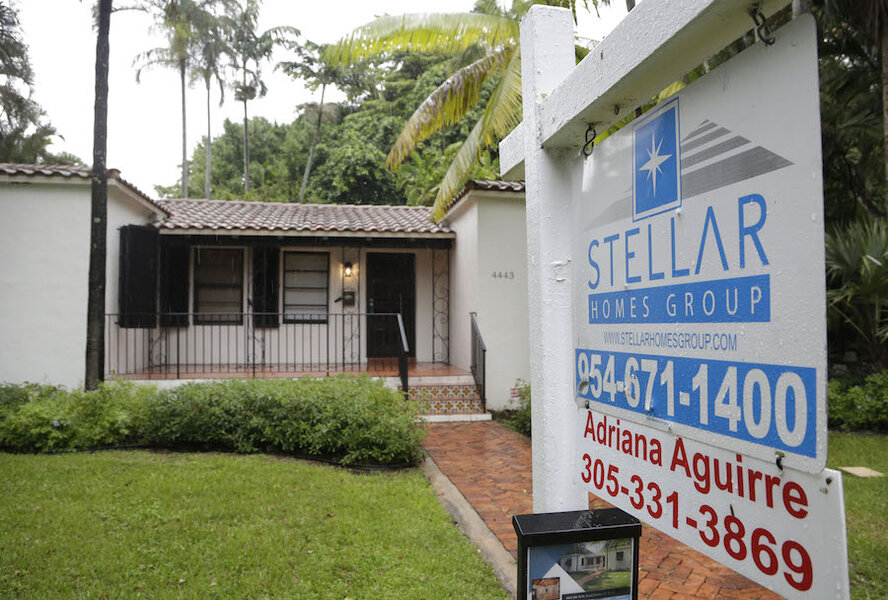Previously owned home sales jump in Northeast, Midwest
Loading...
Spring has warmed the US housing market, bringing sales of previously owned homes to higher levels than expected in March, and slightly higher than in March 2015, according to a national report released Wednesday.
Sales of single-family homes, townhomes, condominiums, and co-ops rose last month by 5.1 percent from February to a seasonally adjusted annual rate of 5.33 million homes sold, reports the National Association of Realtors. From March 2015, the increase was a modest 1.5 percent.
While every market in the country saw an uptick, the Northeast saw the most significant jump: Sales in the region were up 11.1 percent from February, and 7.7 percent up from March 2015. The Midwest region saw an 9.8 percent increase in sales over February, but less than a 1 percent increase from March last year. In contrast, sales in the South rose by 2.7 percent from February (2.3 percent up from March 2015), and in the West by 1.8 percent (2.5 percent down from March 2015).
Economists expect the existing-home-sales market to stay warm, reports Reuters, buoyed by low mortgage rates, recent stock market gains, and a solid labor market, with a jobless rate of 5 percent, nearly an eight-year low.
"There cannot be too much wrong with the economy if consumers keep buying new homes. It shows confidence," said Chris Rupkey, chief economist at MUFG Union Bank in New York, according to Reuters.
Consumers might be buying homes at slightly higher prices, too, as the median price for all types of previously owned homes rose to $222,700, up 5.7 percent from $210,700 last March. The realtors association reports that the price increase last month marked the 49th consecutive month of year-over-year gains.
But most of the homes sold fell in the $100,000 to $500,000 range, with not enough supply available in the lower end of the housing market, and affordability issues in the higher-end market.
"Unfortunately, the same underlying deterrents impacting [people's] ability to buy haven't subsided so far in 2016. Affordability and the low availability of starter homes is still a major barrier for [people] in most markets," said Lawrence Yun, chief economist at the National Association of Realtors, in an announcement.
The share of first-time home buyers was 30 percent in March, which hasn't changed from February or from all of last year, and is historically low. But economists hope that this will begin to change.
"Conditions are more positive for buyers now that mortgage rates have dipped back down," said Robert Dye, chief economist at Comerica Inc. in Dallas, reported Bloomberg. "Jobs have been a key support. Hopefully, we are starting to pull some of the marginal buyers back into the housing market," he said.
Because of constraints in availability of previously owned homes, they sell fast, reports Reuters. Houses stayed on the market for 47 days in March, the fewest number of days since August, and down from 59 days in February.








